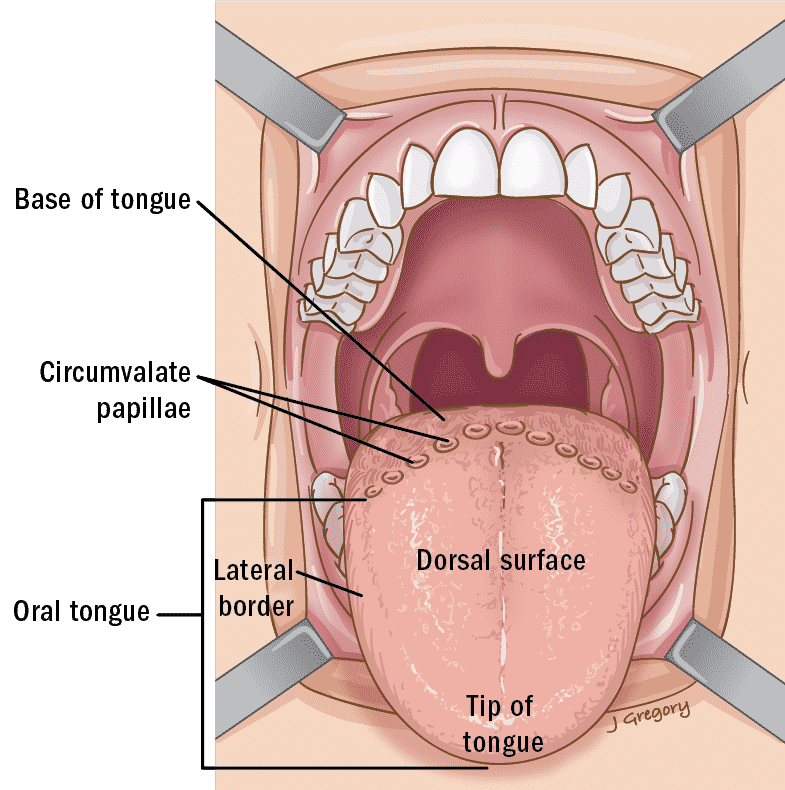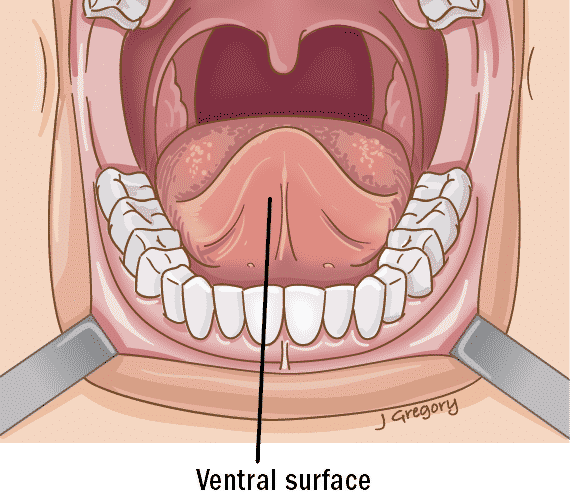Tongue cancers are described by their location on the tongue, what other subsites they extend to (if any), how much of the tongue is involved, and how deeply they invade into the muscles of the tongue. Therefore, in order to begin to understand tongue cancer, it is important to first gain some background knowledge of tongue anatomy.
The tongue is a thick, muscular organ that consists of two main parts: the oral tongue and the base of tongue. These two parts are separated by the circumvallate papillae, which are dome-shaped projections on the surface of the tongue that house some of the taste buds of the tongue. When doctors talk about tongue cancers, they are usually referring to cancers of the oral tongue.

Oral Tongue

The oral tongue is the part that is visible when the mouth is open. It refers to the front two-thirds of the tongue, and is part of the oral cavity. The oral tongue is capable of moving in multiple directions and also plays a critical role in articulation (or speech). It also helps to manipulate food during chewing and to prepare the food to be moved to the oropharynx.
4 Different Parts of the Oral Tongue
- Tip: this is the front part of the tongue.
- Lateral border: this is the side of the tongue, and there is one on the right and one on the left of the tongue.
- Dorsal surface: this is the top of the tongue, which is closest to the roof of the mouth.
- Ventral surface: this is the undersurface of the tongue, which is connected to and closest to the floor of the mouth.
Base of Tongue
The base of tongue is actually part of the oropharynx, which is part of the throat, not the oral cavity. The base of tongue is not visible when the mouth is open, as it is located all the way at the back of the tongue. Learn more about cancers that arise in the base of tongue.
The tongue is mostly muscle, but it is covered by a lining of mucosa. Most tongue cancers start in this mucosal lining. This lining is connected to the lining of other subsites of the oral cavity, particularly the floor of mouth, the retromolar trigone, and the anterior tonsillar pillar. Therefore, cancers that start in the tongue mucosal lining can easily extend to other subsites of the oral cavity.
Muscles of the Tongue
The muscles of the tongue are divided into the extrinsic muscles and the intrinsic muscles.
- The extrinsic muscles begin somewhere outside of the tongue and end in the tongue, and are responsible for moving the tongue in different directions.
- The intrinsic muscles are located within the tongue, and are responsible for changing the shape of the tongue.












